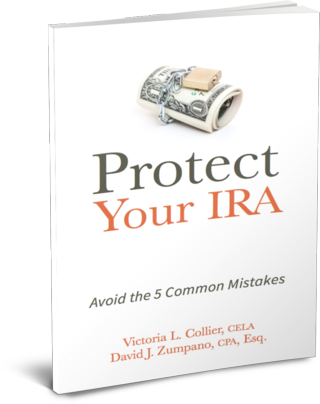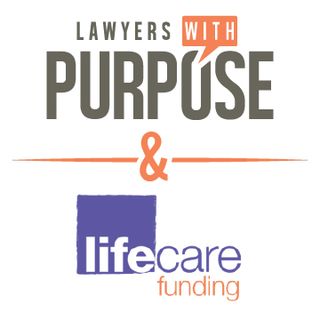“But I won’t ever need Medicaid. I’ll be in a VA nursing home.” You may have heard this before from a client in your attempts to consider the possible need for Medicaid in a veteran’s estate planning. Hopefully the client will never require skilled nursing care, but the reality is that the VA will only pay for or subsidize veterans who need nursing home care due to a service-connected disability or any vet with a combined service-connected disability rating of 70% or more and who need skilled nursing care. The VA only provides nursing home care for individuals in other categories IF beds and resources are available.
 First, what do we mean by skilled nursing care and what exactly is a VA nursing home? Medicare.gov defines skilled nursing care as “Care given or supervised by registered nurses. Nurses provide direct care; manage, observe, and evaluate a patient’s care; and teach the patient and his or her family caregiver.” It goes on to say, “Any service that could be done safely by a non-medical person (or by yourself) without the supervision of a nurse isn’t skilled nursing care.” Title 38, Chapter 1 of the Code of Federal Regulations, which relates to the VA, defines a nursing home as:
First, what do we mean by skilled nursing care and what exactly is a VA nursing home? Medicare.gov defines skilled nursing care as “Care given or supervised by registered nurses. Nurses provide direct care; manage, observe, and evaluate a patient’s care; and teach the patient and his or her family caregiver.” It goes on to say, “Any service that could be done safely by a non-medical person (or by yourself) without the supervision of a nurse isn’t skilled nursing care.” Title 38, Chapter 1 of the Code of Federal Regulations, which relates to the VA, defines a nursing home as:
(1) Any extended care facility which is licensed by a State to provide skilled or intermediate-level nursing care,
(2) A nursing home care unit in a State veterans' home which is approved for payment under 38 U.S.C. 1742, or
(3) A Department of Veterans Affairs Nursing Home Care Unit. [38 CFR 3.1(z)]
The first type of nursing home is one not affiliated with the VA at all. These are private facilities, and probably the majority of nursing homes in which your clients may reside are of this kind. The second type of nursing home is a state veterans’ home that is owned, operated and managed by the state, but must be formally recognized and certified by the VA on an ongoing basis. The state, however, determines the criteria for admission, even though the facility may receive funds from the VA to help subsidize the cost of care to veterans. The third type is what is commonly called a VA nursing home, even though the VA doesn’t call them nursing homes anymore. The VA introduced the term “Community Living Center” and seeks to make the nursing home as much as possible like a real home.
As stated earlier, only veterans with both a documented need for skilled nursing care and who have a service-connected disability that meets certain criteria will qualify for this care at a VA nursing home at no charge. Veterans with non-service-connected disabilities and veterans with lesser-rated service-connected disabilities can apply as long as they require skilled nursing care, but they may be subject to long-term care co-payments.
There are also some other limitations if your client insists on a VA nursing home. There are far fewer of these than the other types of nursing home, and thus there might not be a VA nursing home in your client’s geographical area. State Veterans Homes are fortunately much more common. You can find a directory of State Veterans Homes at the website of the National Association of State Veterans Homes at http://www.nasvh.org/StateHomes/statedir.cfm.
Furthermore, you can’t just decide you are going to a VA nursing home, even if you believe you meet the level of care and rating requirements. There is a process to be evaluated for VA nursing home care. You must first be enrolled for Veterans Health Benefits, which is another process in and of itself and can include an evaluation of income and assets. For example, veterans with non-service-connected disabilities applying for extended care or the Nursing Home Care Unit may be required to complete the VA Form 10-10EC to determine the family's current income and assets. Then, once enrolled with the Veterans Health Administration, you must then be evaluated by a primary care provider or a geriatric specialist for nursing home care.
Another limitation of VA nursing homes is that they generally only accept veterans and not surviving spouses. Some State Veterans Homes do admit surviving spouses and even parents, but that depends on the state. For example, California has veterans assisted living facilities and skilled nursing facilities that will admit spouses, but California also has aggressive estate recovery policies to recoup state funds used to pay for those facilities. Finally, veterans who qualify for VA nursing home care may not always remain qualified. Veterans may be discharged from a VA nursing home without consent when VA nursing home care is no longer needed; for example, if the veteran's needs can be met at home or in a private nursing home close to the family.
If, despite all these hurdles, your client still wants to explore skilled nursing at VA expense or any other long-term care resources of the VA, visit the VA’s webpage at http://www.va.gov/GERIATRICS/index.asp to find information related to geriatrics and extended care.
As we approach the end of the year, we want to personally tell you how thankful we are to have you as a subscriber of the LWP Connection blogs and newsletter. Whatever the reason is that you stay connected with us each week via email (i.e. substantive law training, marketing assistance, practice management tips)…we are glad you are here
Yet, as you work on your practice goals and plans for 2016, please know that the guidance and mentorship you receive here is only THE TIP OF THE ICEBERG of what we offer at LWP.
Sabrina A. Scott, Paralegal, The Elder & Disability Law Firm of Victoria L. Collier, PC and Director of VA Services for Lawyers With Purpose.
Victoria L. Collier, Veteran of the United States Air Force, 1989-1995 and United States Army Reserves, 2001-2004. Victoria is a Certified Elder Law Attorney through the National Elder Law Foundation; Author of “47 Secret Veterans Benefits for Seniors”; Author of “Paying for Long Term Care: Financial Help for Wartime Veterans: The VA Aid & Attendance Benefit”; Founder of The Elder & Disability Law Firm of Victoria L. Collier, PC; Co-Founder of Lawyers with Purpose; and Co-Founder of Veterans Advocate Group of America.










